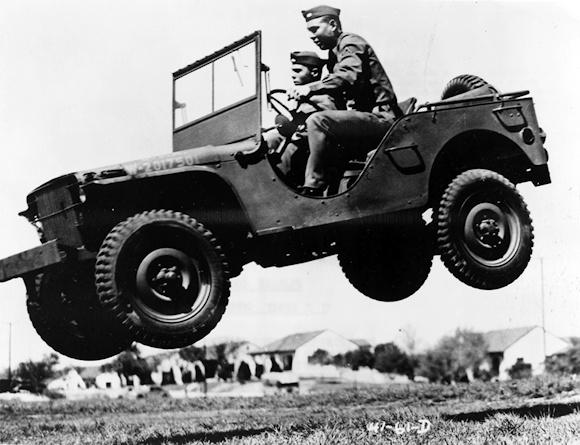If you are a fan of the rotated vehicles that have marked military history, you will certainly have been captured by the compelling images of the tests to identify a vehicle suitable for military use.
The tests that the Jeep Willys was subjected to are only one example of that traumatic, albeit efficient, method reserved for prototypes and now partially passed.
There are several vehicles born for military needs (in Italy the Fiat Veicoli Industriali 600 series trucks) which subsequently underwent a successful civil conversion, among these, in addition to Willys that has made school in the international 4x4, there are also some aircraft including the Boeing 747 born as a freighter for the USAF but which has become an excellent civil airliner.
The evolution of needs
With the memories of the military, based on where you were in service, dozens of pseudo vehicles alienated by the administration for an embarrassing poor efficiency demonstrated in tactical and logistical use will come back to you.
The acquisition of the tricycle mechanical mule (v.articolo) or armored 6614 (v.articolo) are just some examples that could be followed by the Fresia F18 MTC 90 trolley rather than the poor watertightness of some crawlers or the Yugoslav refusal to supply the AR76 (v.articolo). In my opinion, however, an excellent 4x4.
Pages not very happy for public spending, but changed, at least in the eyes of the media, as soon as Italy had to interact confronting the other NATO armed forces with the missions of the 90s.

The need for optimization of the platforms following practicality and use schemes in relation to the departments, has revolutionized the self-demonstrators in the barracks but, needless to hide it, has also raised doubts towards those in charge of choosing means and materials, often not a military .
In the light of an interesting proposal for military vehicles (Eurosatory2018), under the lens of dissent, a list of annexed components deemed superfluous and expensive would end, but it must be remembered that the range military it can be customized according to the needs of client governments and here, the role of the fitting companies is crucial.
It is good to make a strictly military distinction between the two types of operational means (generic term) used by the armed forces. There is the branched component of the "logistics" and that of the "tactics" (weapon systems) which is divided into combat vehicles, protected and tracked. Only some of them have platforms in common with logistics, for example trucks armored vehicles.
Top secret topic
A mystery known only by companies and the military that gravitate around homologations is that of mechanical structural tests. Nothing strange given that these are vehicles related to national security, but we could find ourselves in front of a Pulcinella secret if we talk about it with an elderly military mechanic. It turns out that military trucks are nothing more than civilian versions militarized in different conformations including the protected one, but with the inclusion of some important changes. A reality that does not concern combat platforms, which fall into real ones as mentioned weapon systems - among these, the crawlers and rotated with hull.
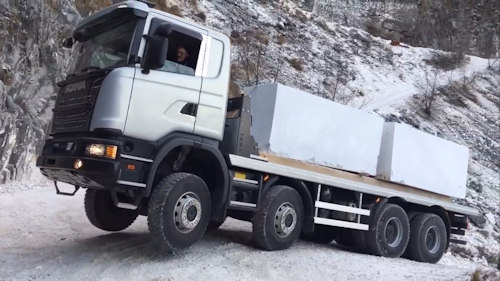
The main structure of the logistics and derivatives is identified as the main guarantee of reliability, after a careful analysis of the commercial feedback regarding the civil means already existing and subjected to hard work. For example, the means used for the incessant transport of tens of tons of marble up and down. Here, updates and continuous improvements in commercial production are elements that make school even on current military heavy vehicles.
It should be emphasized that in the automotive field, the endurance tests of the fateful 100 thousand kilometers have left more free field for specific tests in the city, highway and track to test their stability. A ministerial engineer during a recent telephone chat claimed: "At some point from the production chain, the military platforms are taken and follow an artisan development". A process not too different from what happens for custom-built cars where the craftsmanship, uniqueness, exclusivity and materials of the vehicle justify the costs of a singular civil and military method.
The construction site is the first step
Despite a disorienting NATO green color or vegetated liveries, we can observe that cabins and instruments are redesigned and despite a substantial simplification, modern electrical engineering (sometimes too much) is associated with military employment opportunities, such as the bipolar socket for starting bridge, the CTIS system central tire inflation system it can only be inserted with disc braking systems, specific shapes for air transport, Nato uniform towing gears, and in particular the reinforced traction axles equipped with single or twin wheel according to the load.
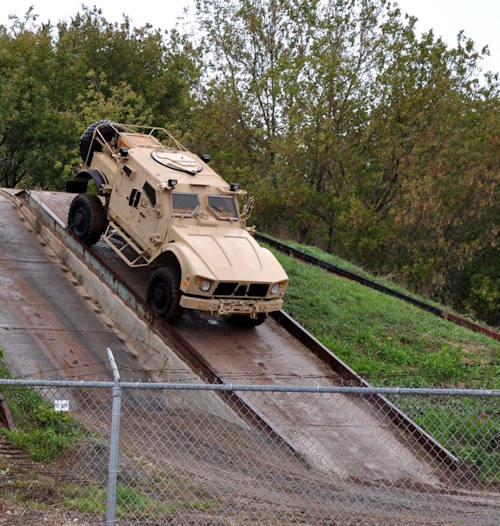
Everything starts from the OPERATING NEED that takes care of satisfying the need of man on the ground by describing the capabilities that the platform must possess. The military certainly does not use velvet gloves during operational excitement. The skills are translated into technical characteristics that will allow the Defense Administration to be able to start the research and development process of the vehicle.
A series of subsequent actions will lead the platform to a series of tests (front and side slope, temperature range, difficult passages, watertightness in the fords or towing power etc.) which will define the final configuration it will see in the technical approval and in operational validation the necessary premises for the declaration of suitability for military use and any declaration of introduction into service.
Curiosity: Although unconfirmed (and it is not clear why) there is an unofficial news that would argue that in the early 90s an articulated lorry (road tractor and semi-trailer) under consideration to be introduced into the FF.AA. has been tested in the Sahara desert with an exceptional load of cement blocks and oversized tires so as not to sink into the sand. It is assumed that the examination was aimed at testing the chassis, kinematic organs and the identification of the most suitable engine.
Engines
With the motoring progress they have a higher specific power than in the past while now complying with the EEC regulations concerning anti-pollution. They are tested and developed to run on military fuels jet fuel with high sulfur content, a typical feature of developing countries.
NATO tests, as usual, must validate the life of the engine under heavy load conditions, factor load. In addition to the electronic systems capable of meeting the high MIL EMC and EW standards, the propulsion system is part of the "over-ride" fees or, if necessary, it is possible to release some safety and limitation blocks in order to continue the mission even at cost of engine breakdown.
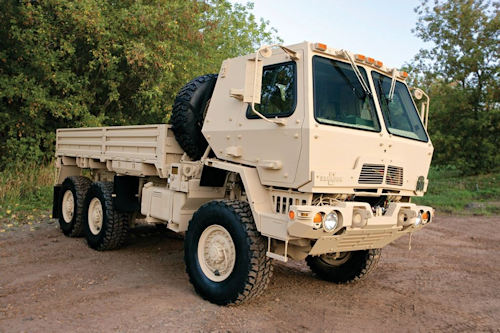 Read more: Integration: Approval and qualification of materials for military use
Read more: Integration: Approval and qualification of materials for military use
To complete the article, I have tried to synthetically extract some news on the bureaucratic procedures to confirm the military suitability of the materials, that is, vehicles, weapon system, platforms, etc. The function is performed, as reported by TER-G-021 / Interim of January 2013, by the MINISTRY OF DEFENSE - GENERAL SECRETARIAT OF DEFENSE AND NATIONAL DIRECTORATE OF ARMAMENTS DIRECTION OF LAND ARMAMENTS -. It must be said that if a material already has a STANAG cataloging, Standard Agreements (the Atlantic agreement on regulations for military communities) this will speed up the process resulting valid for the purpose of introduction into service without the need to carry out any Operational Validation.
Before validation, the processes involve two steps: the approval (v.link) and qualification
List of items subject to approval: rotated or tracked combat, tactical, logistic and special vehicles, artillery, bridge materials, handguns, handguns and firearms, anti-tank and anti-aircraft weapon systems, medium and large caliber ammunition, missiles, UGV, war apparatuses electronics, hand grenades, complex digitized platforms, grenade launchers, energy materials (ME) in their own right, IR / IL night vision devices, equipped shelters / containers, individual and vehicular radio equipment, individual and systemic passive protections, materials for CBRN defense.
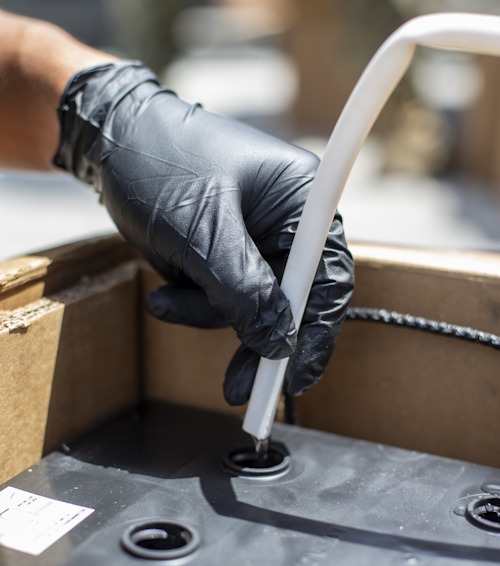
qualification: batteries, power supplies, small-caliber ammunition, engines, pointing systems, generating sets for systems, tires, paints, tarpaulins for vehicle systems, lubricants, hydraulic fluids and special products for use on land systems, materials and specific components e.
Technical Testing Program: carried out in order to verify the compliance of the article with the requirements and is defined by the DAT, the Directorate of Land Armaments, in collaboration with specialized military entities, universities and industry. They are ascertained (but it is not known how) through specific operations as well as industrial ones that follow a personal method or following in the company area those required by the DAT.
Military use
The wear of the military vehicle is historically more linked to mechanical stress (it is also a long period of inactivity and a rapid and traumatic reuse) and climatic conditions compared to the number of kilometers traveled, collectors or buyers of ex-military vehicles know this very well. In the operational logistic medium, unlike its civil derivation, the uses that for the civil equivalent would be exceptional should be considered as customary. For example, an important use on motorways, an off topic reality for quarry vehicles. Masses and performances therefore play a crucial role for the military vehicle.
In this regard it is interesting to take for example the civilian Iveco ASTRA HD8 4x4 and its widespread two-axle military alter ego ACTL SM 44.30 BAD (following photo). We will notice that it is in the truck variant or civilian work vehicle, the predominant characteristics are different from the Standard Military series. In addition to the different total masses that in this case make the military slimmer in the tractor and trailer combination, the HD8 brake system is drum while the military disc (more suitable for speed and off road as the disk is less subject to hold dirt) and its powers are around 300 horsepower against the 400, 450 and 480 of the HD8.
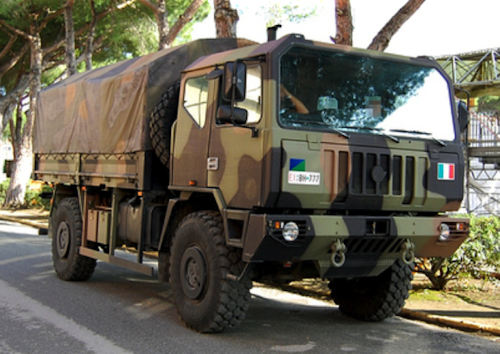
Test for set up
Interesting are the emerging vehicle manufacturers all terrain which have also expanded into the production of military vehicles or materials connected to the vehicles. The peculiarity of production consists of assembling components of its own production with others, the best, coming from the mass market. Just to retrace the past, I remember that Denny MADAU Prototyping & Testing of the historic BREMACH brand responded to those who asked him what was his role in the company specialized in producing vehicles from scratch: "My job? Drive to the destruction! ".
Among the competent companies, I would like to highlight one of the most renowned and specialized in the design, production and fitting out of industrial, special and military vehicles, the Abruzzo TEKNE VEICOLI of Poggiofiorito in Chieti. In the ex novo production (therefore without existing references) every type of test, also emulating those reserved to the Willis, it is understandably mandatory to ensure the highest quality and durability.
A constructive criticism to be made of modern military automotive, beyond the quality of the means used by our armed forces, lies in the relationship between the military user and the vehicle. A bond similar to long-term rental, perhaps a little embarrassing if we consider the maintenance aspect. Think a bit about a soldier who in the middle of a mission must contact a toll free number for assistance.
A story in anonymity: an officer on a mission in Afghanistan was in a tactical vehicle when in the middle of a dusty and isolated path the vehicle accuses a breakdown and stops. Fortunately there were no snipers and the officer decided to open the hood to understand how to organize. Thanks to his mechanical knowledge and the technical simplicity of the vehicle, the officer managed to restart it and bring it back to base camp. The officer said he met on other occasions, including American soldiers with a similar problem. They, however, armed with an army with many more resources, opened the hood and called for military mechanical assistance.
Photo: web / US DoD / Italian Army

